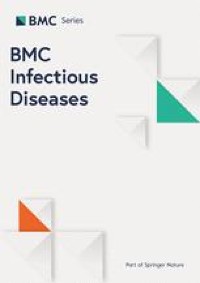Persistent cough and asthma-like symptoms post COVID-19 hospitalization in children - BMC Infectious Diseases - BMC Infectious Diseases

This is the first comprehensive cohort study on children with COVID-19 and post-hospitalization asthma-like to the best of our knowledge. 41.5% of COVID-19 patients had asthma-like after discharge in the present study. Our study population had a higher prevalence of persistent cough and asthma-like symptoms than the US and Chicago populations, which were estimated to have an asthma prevalence of 8–9% and 9.5%, respectively, at all [4, 16]. Moreover, recently published papers in the US reported a prevalence of 7.4–17% for asthma in hospitalized patients with COVID-19 [2, 17,18,19]. The latter reports are contrary to the low asthma prevalence of ≤ 1% observed in China [9, 10]. These heterogeneous findings could be attributed to genetic, geographically different asthma, screening time (during hospitalization or post-discharge asthma), and frequency or techniques for ascertainment. Given the higher percentage of asthma reported in our study than in other studies, it seems that since most previous articles have screened for asthma during hospitalization since we have examined a longer distance, it turns out that asthma can be a reaction and a delay event after COVID-19, especially in children.
Symptoms, which are clearly established to be associated with COVID-19, existed in patients with post-hospitalization asthma-like (Fig. 2). These symptoms include fever, cough, dyspnea, sputum, myalgia, headache, diarrhea, vomiting, abdominal pain, cardiac complication, dry cough, waking cough, activity cough, chest tightness, chest wheezing, weight loss, nasal congestion, and smell decrease Which were significantly higher in the post-covid19 asthma-like group. Except for vomiting, which was not significantly different between patients with and without post-hospitalization asthma-like. In addition, Laboratory results demonstrated that WBC, lymphocyte, neutrophil, plt, Hb, ALT, eosinophil, CRP, and ALKP were not significantly different between patients with and without post-hospitalization asthma-like.
Previous studies [20] have shown that a decrease in lymphocytes and an increase in CRP can predict the chances of hospitalization, since the two factors are statistically different in hospitalized patients with asthma-like, in comparison with patients without asthma no significance was seen (0.810 and 0.523, respectively). Therefore, we found that asthma was not a risk factor for admission and hospitalization in COVID-19 patients. We also found that post-discharge asthma-like was higher in patients with a previous history of asthma than in patients without it, and this difference was statistically significant. Therefore, it seems that the background of asthma can be a risk factor for post-discharge asthma-like in COVID19 patients. According to a recent report, despite the high incidence of asthma, these chronic respiratory conditions have not been reliably reported as major comorbidity for COVID-19 [1]. The evidence presented in this study contradicts the information provided by Lippi and Henry [21] that Severe respiratory disease is associated with severe forms of COVID-19. Such a discrepancy could be because there is no consensus on the severity of COVID-19 patients and all the features of acute respiratory distress syndrome (ARDS) instead of acute lung injury (ALI) [22,23,24]. It may be difficult or impossible for non-intubated people. However, hospitalized COVID-19 patients with asthma are expected to perform worse than patients without. Because SARS-CoV-2 uses the angiotensin-converting enzyme (ACE-2) as a cellular receptor that is suspected to be higher in obstructive respiratory disease, so expected that these individuals would be at higher risk for hospitalization [24]. In fact, reducing the risk of hospitalization in patients with asthma and COVID-19 could be associated with the use of inhaled corticosteroids (ICS), which have recently been shown to have a protective effect against infections, specifically those due to coronaviruses [25].
Therefore, asthma appears to be not a primary risk factor to increase the chance of developing COVID19 or, more severely, admission unless the asthma is uncontrolled. However, background asthma causes recurrent asthma after discharge from the hospital. The above findings can probably also be explained as phenomenon of 'postviral hypereactive airways' seen commonly in pulmonary viral infections as well as viral infection induced exacerbations of previous asthma.
Our study had several limitations. Some data were collected retrospectively after the patient's discharge, causing limitations for drawing associations rather than causal inferences. Another limitation of the current study was that we assessed the data collected from February 2020-January, 2021, and the findings may alter as the result of collecting more data after the study period. It assumed that the possibility of testing patients affected by asthma was higher due to the chronic nature of this lung disease. Another limitation is that we investigate the development of asthma in hospitalized COVID-19 patients with more severe forms of infection compared to outpatients, which does not represent all COVID-19 patients. Low sample size is another limitation that make it difficult to globalize the result.
Comments
Post a Comment